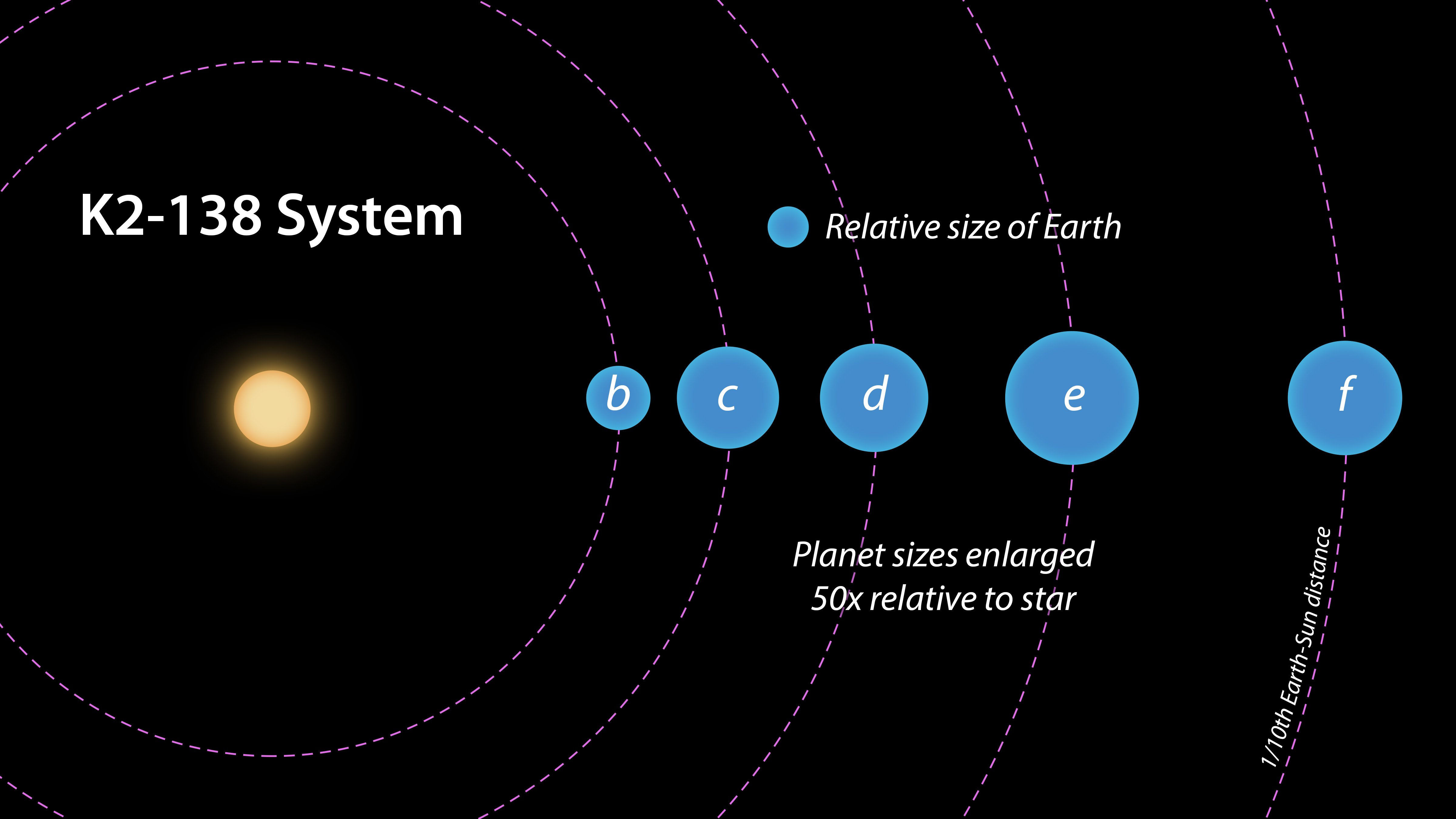A team of citizen scientists had made history with the discovery of a new planetary system containing five planets.
K2-138
Located around 620 light years away, a system of five planets named K2-138 for the Kepler Space Telescope during its K2 Mission, marks the first discovery of a planetary system by a crowdsourced team of amateur scientists.
All of the five planets are packed into a tight orbit around the orange dwarf star, originally discovered by the Kepler Telescope on its recent mission. These types of stars range in size from 0.45 to .8 that of our sun, and the five planets themselves range in size from 1.6 to 3.3 times bigger than Earth. The tight orbit of these bodies and proximity to their central star means that they are uninhabitable, but it’s still a significant discovery by a team without any formal training.
The Discovery Process
Discovering the five planets in their own system was an interesting process that shows the capabilities of a determined group of citizen scientist. The bodies were discovered as part of the Exoplanet Explorers project, which utilizes both the online Zooniverse platform as well as data from the NASA Kepler Space Telescope discussed above.
Kepler measures the brightness of stars, and astronomers look at these measurements in hopes of finding a decrease in the star’s luminosity. These dips indicate that a large body has crossed in front of the star, which is the case for the five planets discovered in K2-138. Gizmodo reports that over the past three years, the Kepler telescope has logged data from 287309 stars, and that number continues to climb by 10000 or more every couple of months. The data connected by Kepler is known as the C12 dataset, and the amount of information is enormous – far too big for a team of busy astronomers to sort through entirely. The Exoplanet Explorers project has started to pick up the slack, and that has recently led to this monumental discovery of five planets.
Exoplanet Explorers was originally founded by Caltech staff scientist Jessie Christiansen and has since attracted thousands of amateur astronomers. In a recent statement, Christiansen explained the process of exoplanet discovery.
“People anywhere can log on and learn what real signals from exoplanets look like, and then look through actual data collected from the Kepler telescope to vote on whether or not to classify a given signal as a transit, or just noise…We have each potential transit signal looked at by a minimum of 10 people, and each needs a minimum of 90 percent of ‘yes’ votes to be considered for further.”
Because of the difficulty of sorting through such a massive amount of data, Christiansen and the team of amateur scientists had to take a new approach.
“We wanted to find a new classification that would be exciting to announce on the final night, so we were originally combing through the planet candidates to find a planet in the habitable zone—the region around a star where liquid water could exist…But those can take a while to validate, to make sure that it really is a real planet and not a false alarm. So, we decided to look for a multi-planet system because it’s very hard to get an accidental false signal of several planets.”
The discovery of these five planets was the result of this novel approach, and would have been impossible without the aid of citizen scientists poring over data. The paper detailing the findings has since been accepted for publication at The Astronomical Journal, but you can find a pre-print at arXiv.





